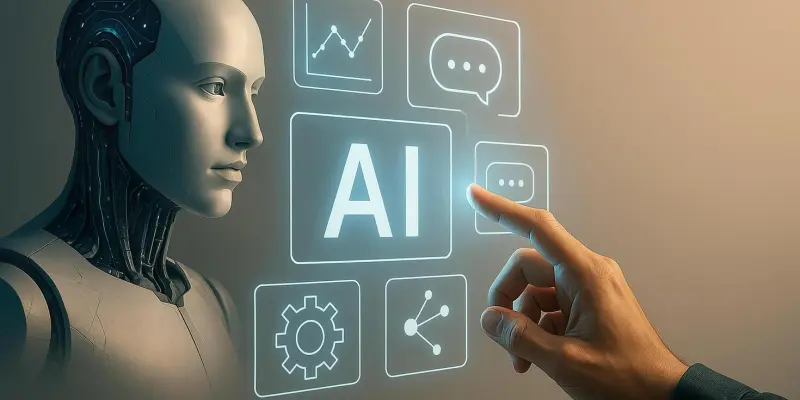In the present era, technological advancement is a steadfast force molding the job market’s dynamics, where generative AI plays a pivotal role in reshaping employment patterns. As AI technologies advance, they impact a broad spectrum of jobs, automating tasks that once required human oversight. Notably, the marketing, creative, and design sectors are on the cusp of a significant transformation driven by AI, ushering in new efficiencies while challenging traditional methods. This evolving landscape necessitates a strategic approach that not only leverages technological capabilities but also fosters diversity and inclusiveness to maximize innovation and creativity.
Adaptability: The New Imperative
The Evolving Role of Companies and Professionals
The rapid integration of AI into workplaces demands a paradigm shift in how companies and professionals perceive adaptability. Businesses must rethink their recruitment and hiring strategies to ensure they attract top-tier talent well-versed in both technology and collaborative skills. For professionals, this transition involves a commitment to continuous learning and skill development, emphasizing flexibility, problem-solving, and teamwork. Professionals equipped with these capabilities can navigate AI-driven workflows while contributing to innovative solutions that blend human creativity with technological prowess. Firms should focus on cultivating inclusive workplace cultures that value diverse perspectives and enhance collaborative creativity. Investment in employee upskilling programs becomes crucial for fostering resilience and ensuring workforce preparedness in adapting to AI-enhanced roles. Companies can gain a competitive edge by encouraging remote and hybrid work models, enabling flexible work environments that attract a broad range of skilled individuals. These steps not only elevate organizational performance but also promote a dynamic culture conducive to sustainable innovation.
Challenges in DEI Initiatives
In this transformative period, the rollback of Diversity, Equity, and Inclusion (DEI) initiatives serves as a pressing concern, threatening progress in achieving equitable workplaces. Despite some advances in narrowing gender pay disparities, significant challenges persist, particularly in top leadership and specialized roles. Female professionals remain disproportionately affected, earning less than their male counterparts, which highlights the critical need for sustained efforts in maintaining equity and inclusion. Companies risk losing valuable talent and damaging their reputations if they neglect these essential aspects of workplace culture. To counterbalance this risk, organizations should commit to fostering diverse leadership and ensuring equitable opportunities across all levels of employment. Monitoring compensation practices regularly can help identify and address pay disparities, reinforcing the commitment to DEI objectives. By actively promoting an atmosphere of inclusivity and fairness, companies not only strengthen their workforce but also enhance their capacity for sustainable growth and innovation. Prioritizing these values fortifies organizations against potential setbacks related to talent retention and organizational reputation.
The Emergence of New Opportunities
Generative AI and New Job Roles
As generative AI continues to revolutionize industries, new employment opportunities are emerging, offering professionals pathways into roles previously non-existent. Positions such as Prototypers, AR/XR/VR Engineers, and UX Researchers are evidence of this shift, combining AI expertise with creative insight to drive innovation. These roles often command premium salaries, reflecting the unique blend of skills required to succeed. Companies that effectively harness the capabilities of AI alongside human ingenuity can foster authenticity and novel solutions that cater to evolving market needs.
For businesses aiming to innovate, focusing on a human-centered approach becomes critical. This strategy ensures that technology complements human skills without overshadowing them, promoting a synergy that drives genuine innovation. Embracing this balance allows companies to stay at the forefront of technological advancements while delivering meaningful products and services that resonate with consumers. Furthermore, developing partnerships with educational institutions and training programs can support the cultivation of talent equipped for these emerging roles.
The Return-to-Office Movement’s Influence
The shift towards generative AI coincides with a broader return-to-office movement, influencing hiring strategies and salary structures. Key U.S. tech hubs are seeing notable salary increases as companies strive to attract and retain skilled professionals in competitive markets. The challenge lies in balancing attractive compensation packages with the provision of remote and hybrid work options, which remain essential considerations for a workforce increasingly valuing flexibility.
Organizations must navigate these dynamics thoughtfully, aligning their policies with employee expectations to maintain engagement and loyalty. Offering comprehensive benefits and robust personal development opportunities can enhance the appeal of work environments, ensuring businesses attract top-tier talent across various demographics. This strategic approach strengthens an organization’s ability to excel in a rapidly changing job market, positioning companies for sustained success as innovations in AI and workplace practices evolve.
Building a Resilient Future
In today’s world, technological progress is a constant force that profoundly influences the job market. A significant development in this arena is the rise of generative AI, which plays a crucial role in altering employment dynamics. As AI technologies evolve, they affect a wide range of jobs, automating tasks previously handled by humans. Particularly in the marketing, creative, and design industries, AI is set to bring about a dramatic shift, creating new efficiencies and challenging traditional approaches. This shifting landscape demands a strategic mindset, where harnessing technology is essential. However, to truly harness the potential of AI, there’s a crucial need to emphasize diversity and inclusiveness, as these elements significantly contribute to fostering innovation and creativity. Therefore, as generative AI continues to reshape the workforce, striking a balance between leveraging its capabilities and ensuring a diverse work environment is vital for driving forward creative solutions and innovations.

